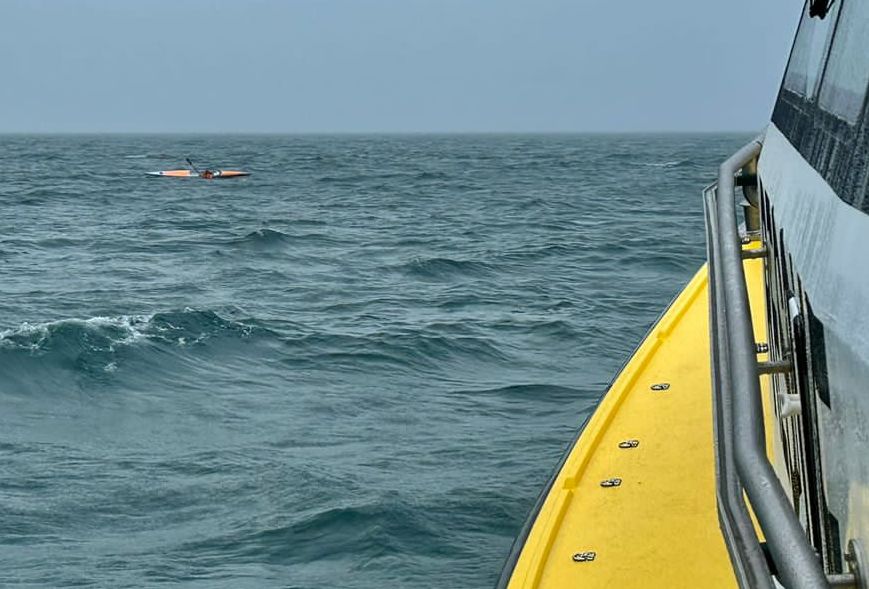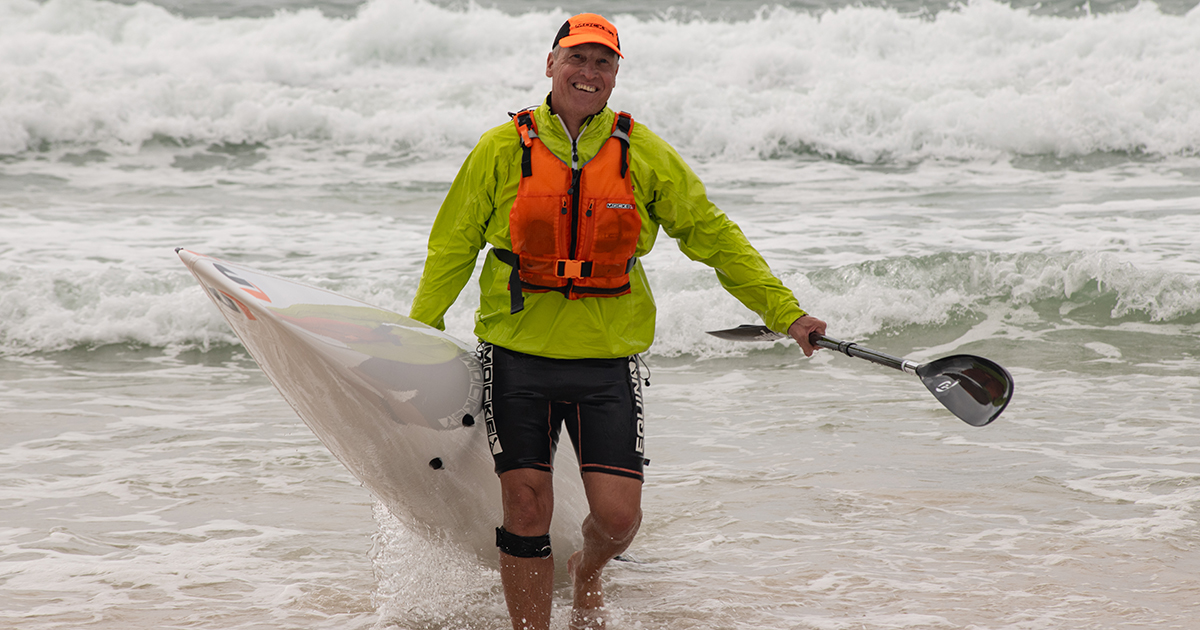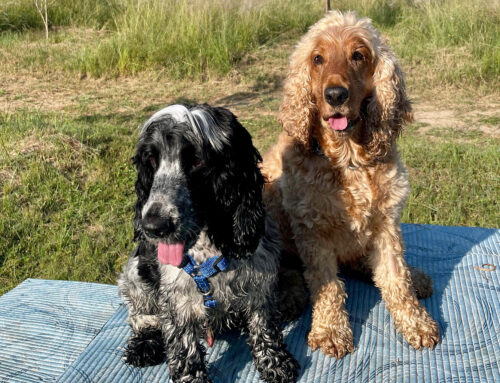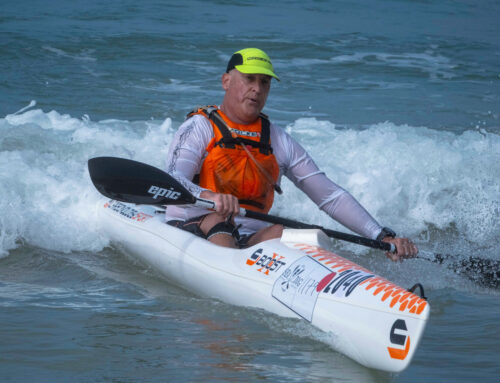Safety on the ocean: Lessons learnt
As I finished final preparations for my intended Reverse Miller’s Run downwind surfski paddle on the beach in front of my local club, Fish Hoek Beach Sports Club (FHBSC) at just before 16:00 on Thursday afternoon, 21 September 2023, I activated the South African National Sea Rescue Institute’s NSRI SafeTRX app. I selected its continuous tracking setting, sealed my smartphone in its special waterproof bag and made sure its lanyard was securely fastened to my personal floatation device (PFD). This is the best thing I could have done before heading out, as soon enough, I needed to be rescued.
Over the past five years downwind surfski paddling has become one of my favourite activities. Nothing beats the intoxicating sheer exhilaration when paddling down the ocean’s swells at breakneck speed. In February 2023 the American surfski manufacturer Epic Kayaks named the Miller’s Run as “arguably the most famous downwind run in the world”. With near-constant south-eastern (the classic Miller’s Run), or north-western (the Reverse Miller’s Run) winds in False Bay, there is plenty of downwind action!
I stay in Johannesburg, Gauteng, which is far from the ocean. I thus do not paddle in the sea as often as I should. Therefore, when in Fish Hoek to “catch some runs”, I usually first do a reorientation paddle or two, close to the shore to find my sea legs before heading out for a downwind. Not so on the 21st of September… I arrived and headed straight out for a Reverse Miller’s Run. This was my first mistake.
Not long after arriving in Cape Town, I booked a spot on the 16:00 for 17:00 Miller’s Run Taxi. This amazing service is run by the legendary “Vinnie” Cicatello and takes paddlers either to Miller’s Point with their skis and kit for a Miller’s Run paddle, or waits for them at Miller’s Point with dry clothes for a Revers Miller’s Run pickup. Because the Miller’s Run usually takes around an hour for the average paddler to complete, the understanding is that paddlers doing a Reverse Miller’s Run depart from Fish Hoek beach on their own an hour or so before Vinnie meets them at Miller’s Point.
Ocean conditions were tricky and messy for a few weeks before my paddle, but on the day, I felt confident to do a downwind paddle without too much trouble. When I arrived at the club at around 15:30, I made my second mistake. Instead of selecting my trusty, stable surfski I’ve been paddling for five years, I opted for my brand new, slimline surfski that I had never paddled in downwind conditions before. I told myself that if I landed in trouble, I’d rely on my SafeTRX app to call the NSRI.
One of the very first things I learnt from my surfski coaches Dawid and Jasper Mocke is the importance of using and activating SafeTRX before heading out into the ocean. I am grateful that I made this discipline a strict practise and can honestly say that I always activate my app, under all circumstances. Another important habit they taught me is to wear bright-coloured clothes, PFD and kit that contrasts with the dark hue of the ocean. In addition, my surfskis are decked out with bright orange decals making them easier to spot in the sea.
On the Reverse Miller’s Run on that Thursday afternoon there were two other paddlers who headed out a few minutes before me. The first five kilometres of my downwind paddle were uneventful. I felt comfortable in my new ski and managed to string a few runs together, which means paddling swell after swell whipped up by the strong, but not unmanageable wind.
A famous landmark on the Miller’s Run is the ocean-based lighthouse called Roman Rock, which juts out from the ocean on its rocky perch, virtually halfway between Fish Hoek and Miller’s Point. As I approached the lighthouse area, my perception of the conditions changed. The ocean seemed messier — choppy and more difficult to navigate and I fell out of my ski close to the lighthouse, taking an inevitable swim. I habitually ensure that my leg leash is securely fastened to my calf and craft to keep it with me in the event of a swim before heading out and that day was no different.
I was able to remount the surfski with relative ease and continued paddling. However, my trepidation about the worsening conditions increased. Rain rapidly resulted in reduced visibility and a messier, windier ocean and I became increasingly nervous and less confident. About a kilometre or so after the lighthouse I swam again and this time I struggled to remount my ski.
The water was cold and although I was wearing neoprene protective gear, I felt my energy waning as I tried to remount many times. After about 10 minutes of struggling, I did another thing right. While still calm and collected, cold but not shivering, I took my smartphone out of my PDF pocket and dialled the NSRI directly from my SafeTRX app’s “Call for help” feature. The always-on NSRI call centre answered immediately and told me that someone from the nearby Simon’s Town Station 10 base would be in touch.
Shortly thereafter the station commander phoned back. He asked clear and concise questions in a calm an upbeat manner and said they will launch a rescue craft that should be with me in about half an hour. Although he asked me verbally where I was, because I had my SafeTRX app set on continuous tracking, he was confident that the rescue craft would be able to reach me without having to search the vast ocean expanse.

It’s hard to spot someone drifting in the open ocean, so bright clothes and orange safety vinyl helps
In the meantime, Vinnie, with my two fellow paddlers safely on shore, also called the NSRI when I didn’t arrive at the expected time at Miller’s Point. The NSRI informed Vinnie that they were sending a craft to help me.
After my NSRI calls, I also phoned a friend or two to while away the time. I managed to get onto my surfski lying down flat with my body out of the water. I was calm throughout the entire experience but did notice that half an hour can go by incredibly slowly while drifting in the sea. And then a seal popped up close to me!
Two weeks before, a 2023 junior K2 canoeing world-champion marathon paddler and Cape Town local was also doing a Reverse Miller’s Run when a seal jumped out of the water and bit her leg and arm, close to Miller’s Point. When I saw the seal heading my way, suddenly I experienced, for the first time during my ordeal, a wave of panic. I stiffened up and tried to sit upright, causing me to fall into the water. As I came up for air after my tumble I looked up and saw the NSRI craft heading directly for me. Phew!
A few minutes later I was safely on board, with my surfski also secure. I was wrapped in warm blankets by the amazing, professional and friendly NSRI volunteers on board and heading towards Station 16’s docking bay in short order. Vinnie and my fellow Miller’s Runners were waiting for me on shore. After a lukewarm shower, my chills were gone and I hopped into the Miller’s Run Taxi, safe, happy and with an epic story to tell.
The next day I visited the station with a hamper of goodies to express my heartfelt gratitude. The station commander emphasised that the NSRI was happy that I took all the necessary precautions to make my rescue as straightforward as it could be, by activating and using the SafeTRX app, by not paddling alone and by wearing brightly coloured, warm clothing while using a ski with bright safety vinyl applied. In addition, I didn’t wait too long before calling them. The longer someone in distress waits to alert the NSRI, the more difficult a rescue exercise becomes. Rather call earlier to make it easier for everyone.
Two days later, I’m delighted to report, I was back in my trusty, stable and reliable surfski and participated in the wonderful Adreach Heritage Paddle race from Fish Hoek to Simon’s Town, Millers’ Point Bay and back to Fish Hoek without incident.
Thank you, NSRI. I couldn’t have wished for a better rescue experience.

Louis Eksteen after a successful surfski paddle in Fish Hoek bay




